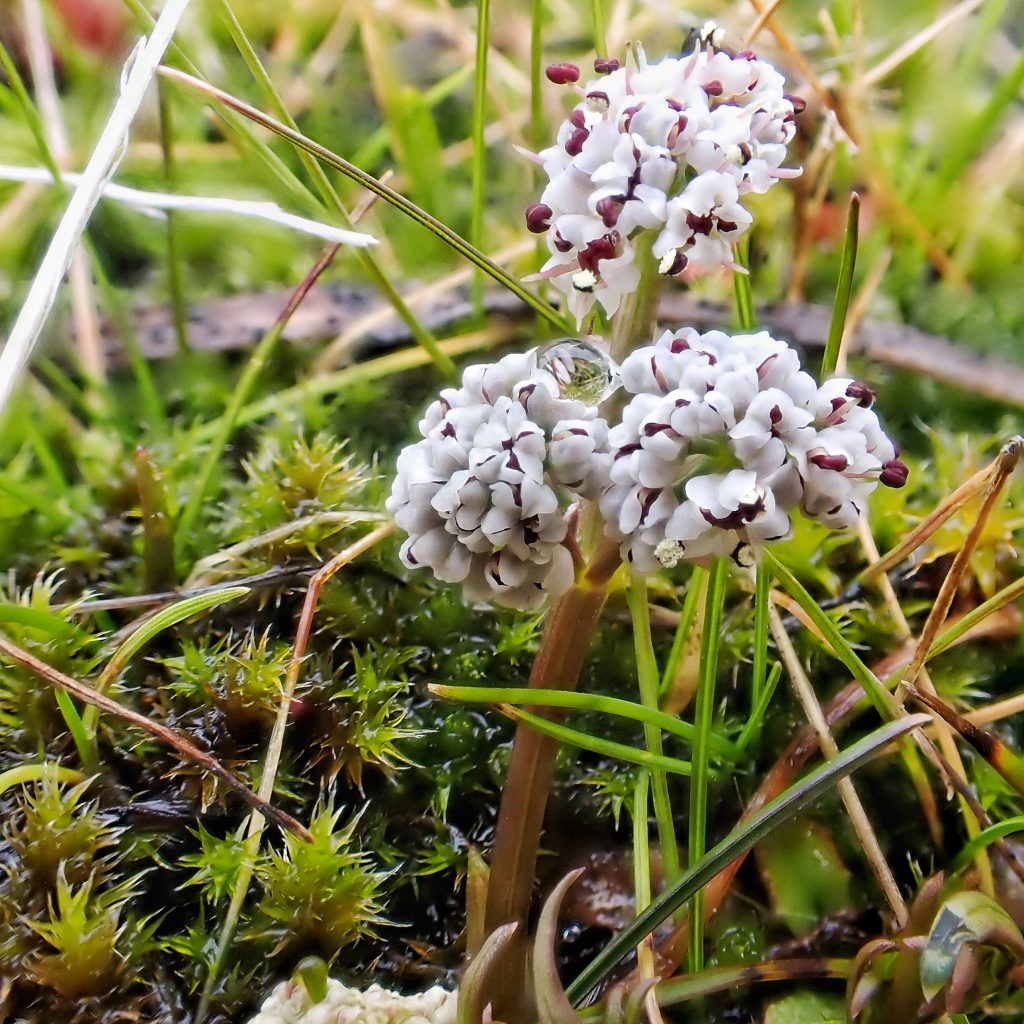
When Pam and I headed into the Columbia River Gorge last Sunday one of my hopes was that we’d find our first blooming native wildflower of 2023, and salt-and-pepper seemed a likely candidate. The tiny (the whole flower umbel is less than a half inch wide) clumps of Lomatium shown here were the only plants in flower of any sort that we found, but I’m not positive which salt-and-pepper they are. Not that this is a new thing, since Mathias (1938) segregated them in his revision of the genus, but I was unaware that there are 2 very similar species that grow in the same areas and flower at the same time, both are commonly called salt-and-pepper, and they have often been thought to be the same species, Lomatium gormanii. There are two main differences between the 2 species- Lomatium piperi often has a leaf-like bract growing from the scape (the stem of the flower umbel), while L. gormanii usually lacks that bract. But the problem is that L. piperii doesn’t always have that caulescent bract, and L. gormanii sometimes has a very small one. The only positive way to tell the two species apart is that L. piperi has smooth (glabrous) fruits, and L. gormanii has minutely pubescent (hairy) ones.
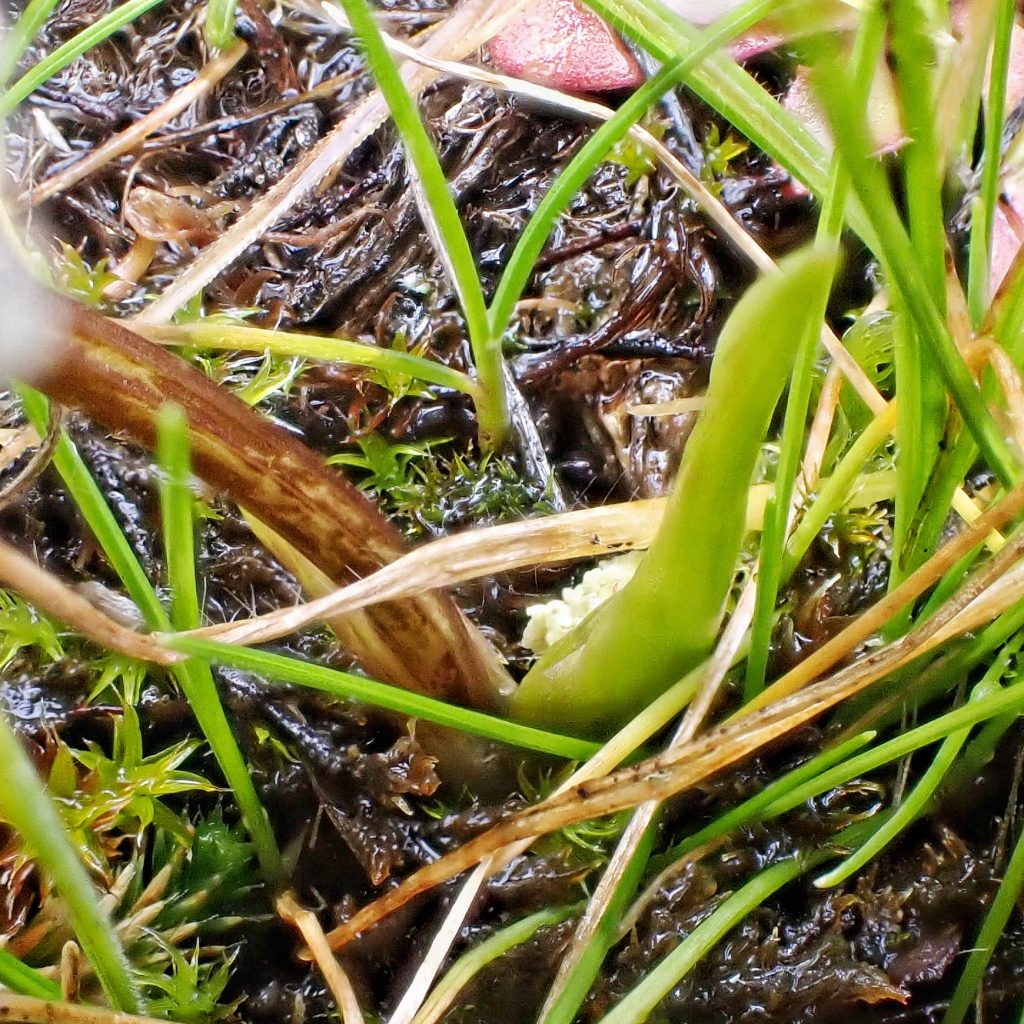
So, what it comes down to is that if one is not an experienced botanist with impeccable timing there’s no telling for sure whether one is looking at Gorman’s salt-and-pepper or Piper’s salt-and-pepper. And for those of us who are recreational naturalists, as opposed to scientists doing surveys, does it matter? Some of my photos seem to show a bit of caulescent bract, but others do not, and the two species are said to occasionally grow side by side. While I have to admit that I’d have made an effort to determine whether the bracts were present or absent if I’d known it was an important trait, would I have been any more thrilled at knowing positively that some of them were Piper’s salt-and-pepper, than I already was at seeing a native wildflower blooming in the first week of February?
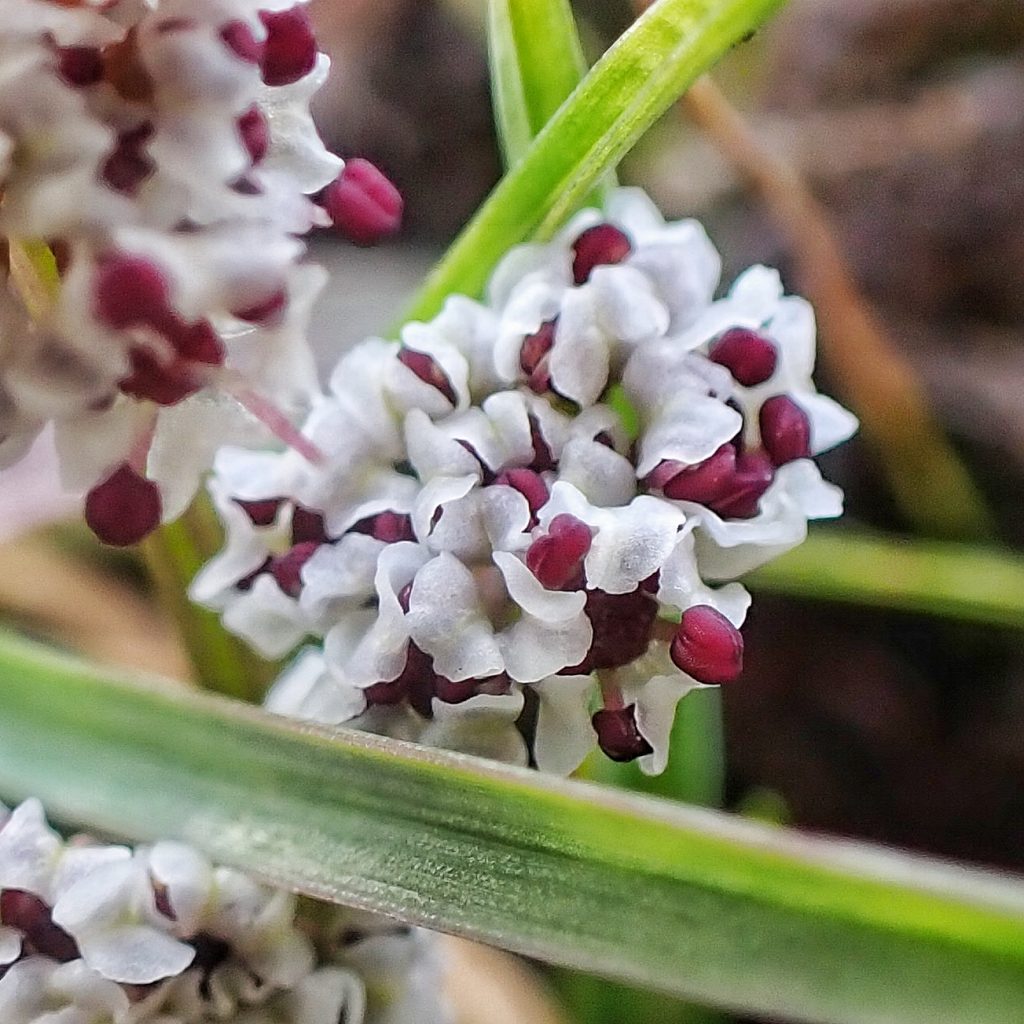
There is also the question of whether or not they are truly separate species. According to a study (Schlessman; 1984) designed to determine hybridization rates between taxa, in a controlled environment where pollen from one set of anthers was applied to the stigma of the alternate taxa, 38% of the L. gormanii X L. piperi crosses set seed. This is a very high percentage in a genus where hybridization is considered to be rare. And when it really comes down to it, what is a species concept except a snapshot in time, a temporary island of organisms in the vast sea of evolutionary history? I worry at times that the ‘splitters’, with their focus on finding the differences between individual organisms, lose sight of the inherent homogeneity of a given clade, and, in a world where race is already such a deeply divisive issue, I am concerned about the consequences should the mentality of the ‘splitters’ be applied to humanity.
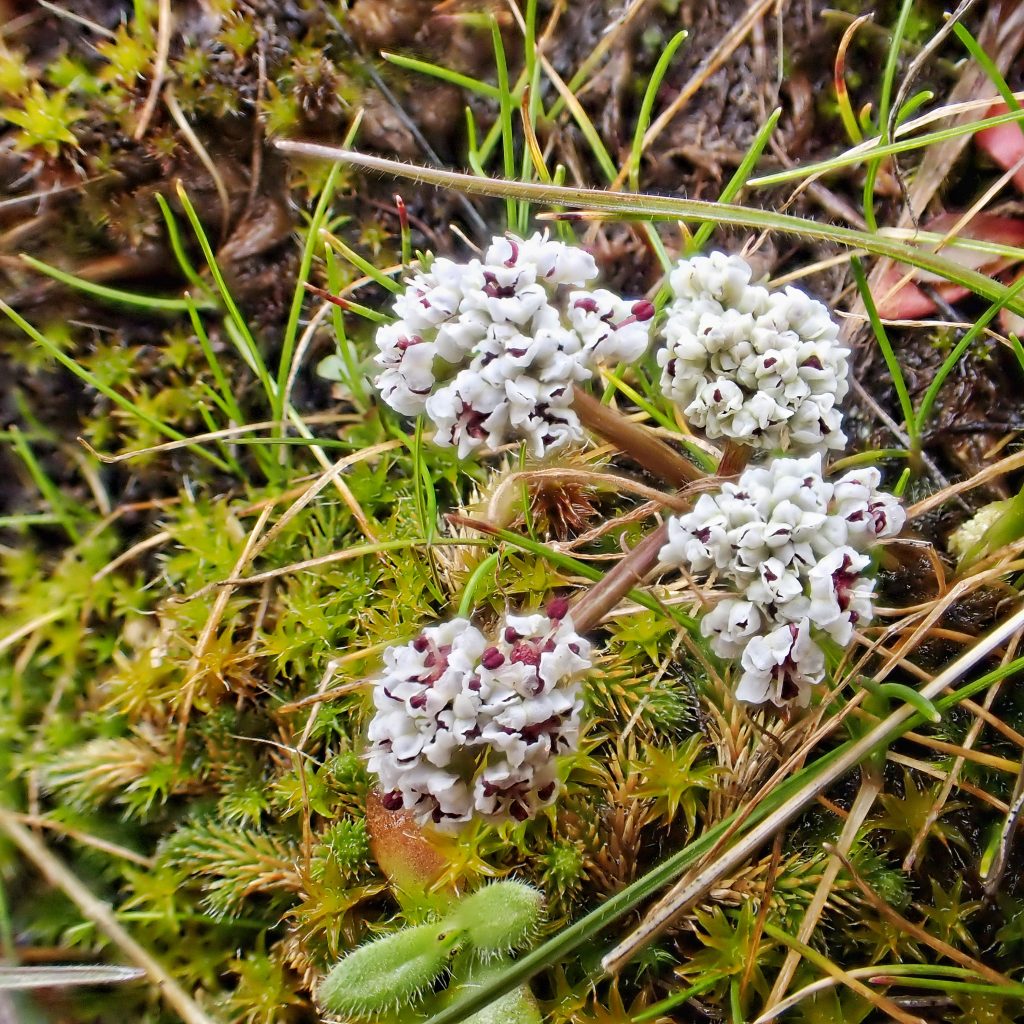
The only human uses for this plant that I can find are that Paiutes in Oregon used the roots for food, either roasted or ground into flour. It is also interesting to note that on the websites ’Plants for a Future’, and ‘Native American Ethnobotany Database’, they list L. piperi or L. gormanii, but not both, so apparently they are considered equal for culinary purposes. It may seem I’m doing a lot of rationalizing here for the fact that I’m not positively identifying this plant, and possibly I am. However it is much more tedious and time consuming to essentially research two profiles just to see if there are differences between the two species that need to be noted. But in this case there were very few differences, although that could be because there just isn’t a lot of information available for either one.
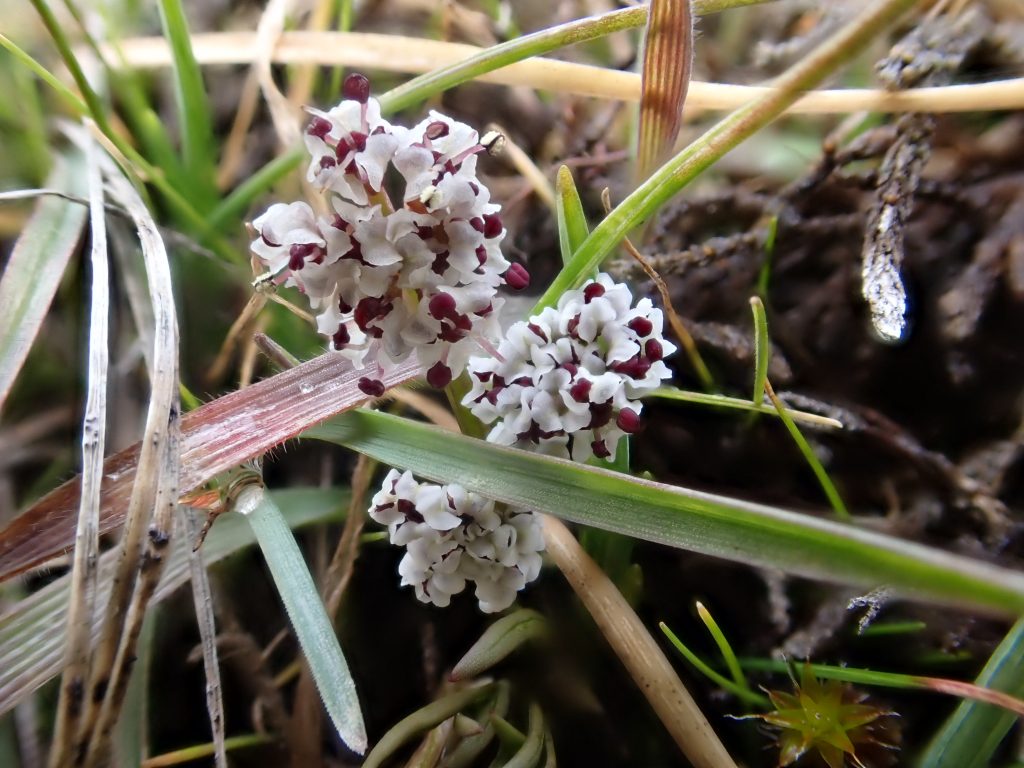
Description-Small (less than 3.5” tall) plant with terminal segments of pinnate basal leaves over 10mm long, white petaled flowers with dark red to purple anthers, and may or may not have a leaf-like bract growing from the umbel peduncle or scape; entire umbel often less than 10mm in diameter.
Similar species–Lomatium geyeri is over 3.5” tall, and is not found in Oregon; Lomatium canbyi and L. ravenii have terminal leaf segments less than 10mm long; other Lomatium spp. do not have white petals with dark anthers.
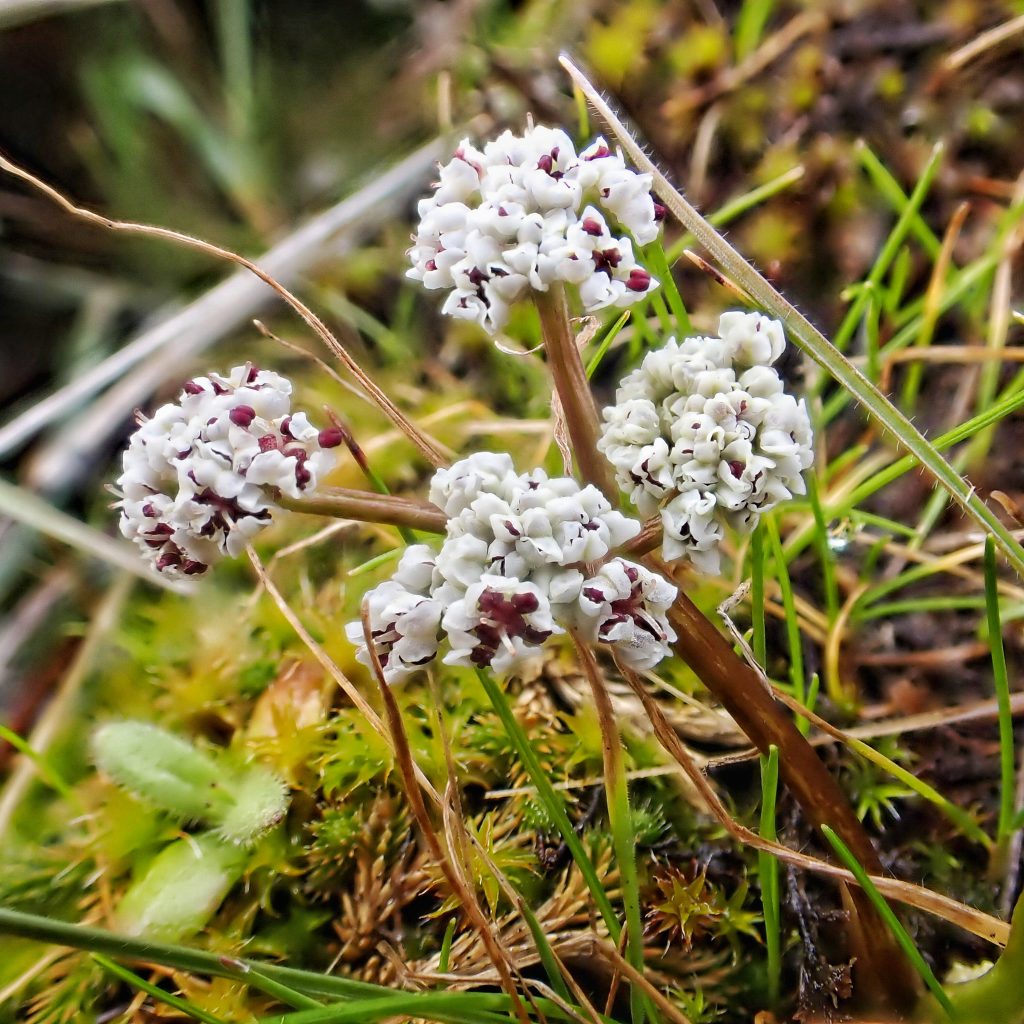
Habitat– Open, often rocky areas, sagebrush steppe, grasslands.
Range– Native; east of the Cascades in BC, Washington, and Oregon; L. gormanii ranges further east, into Idaho, and L. piperi has been found farther south, possibly into California.
Reproductive timing– Blooms February to May
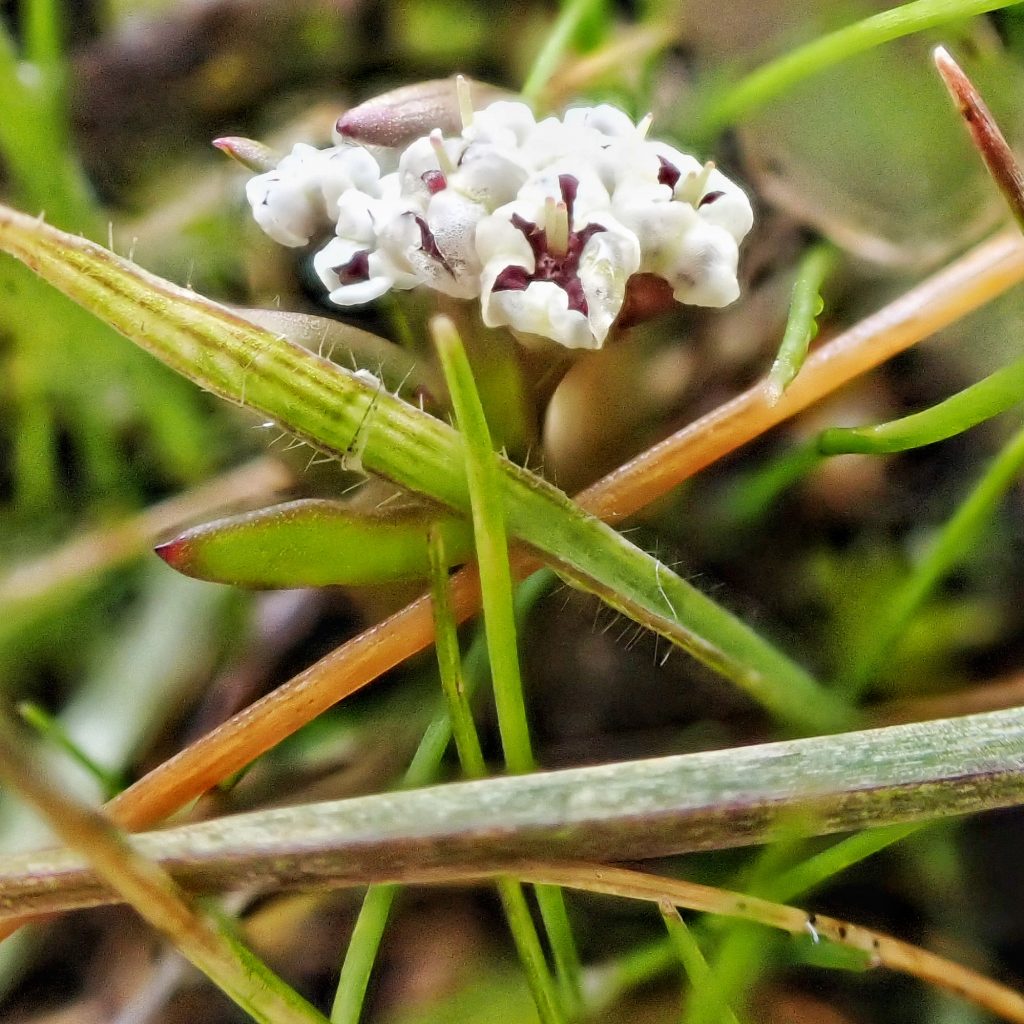
Eaten by– Anise and Indra swallowtail butterflies, and the white-lined Sphinx moth, probably use this as an occasional larval host; presumably an important source of nectar for early appearing native bees like those in the genus Andrena; voles probably eat the roots, since they seem to be fond of Lomatiums in general.
Etymology of names–Lomatium is from the Greek for ‘bordered’ which refers to the wings on the fruit. The specific epithets piperi and gormanii likely honor the botanists Charles Vancouver Piper (1867-1926) and Martin Woodlock Gorman (1853-1926), both of which worked with the parsleys in the PNW.
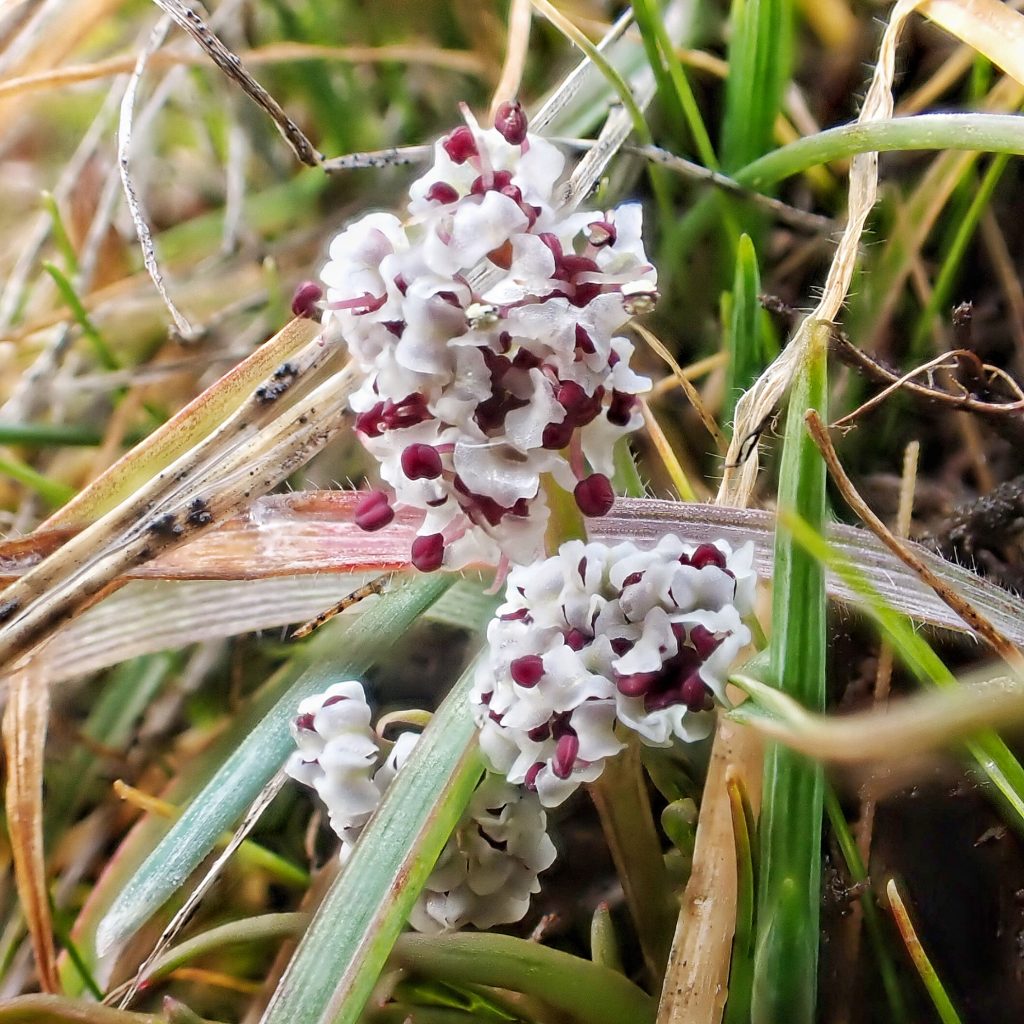
Lomatium piperi | Salt And Pepper | Wildflowers of the Pacific Northwest
Lomatium gormanii | Gorman’s Lomatium | Wildflowers of the Pacific Northwest
Gorman’s Desert Parsley, Salt and Pepper, Gorman’s Lomatium, Salt and Pepper: Lomatium gormanii
https://www.jstor.org/stable/25027598
https://www.jstor.org/stable/2394480
https://en.wikipedia.org/wiki/Charles_Piper
https://www.npsoregon.org/kalmiopsis/kalmiopsis13/bornholdt.pdf
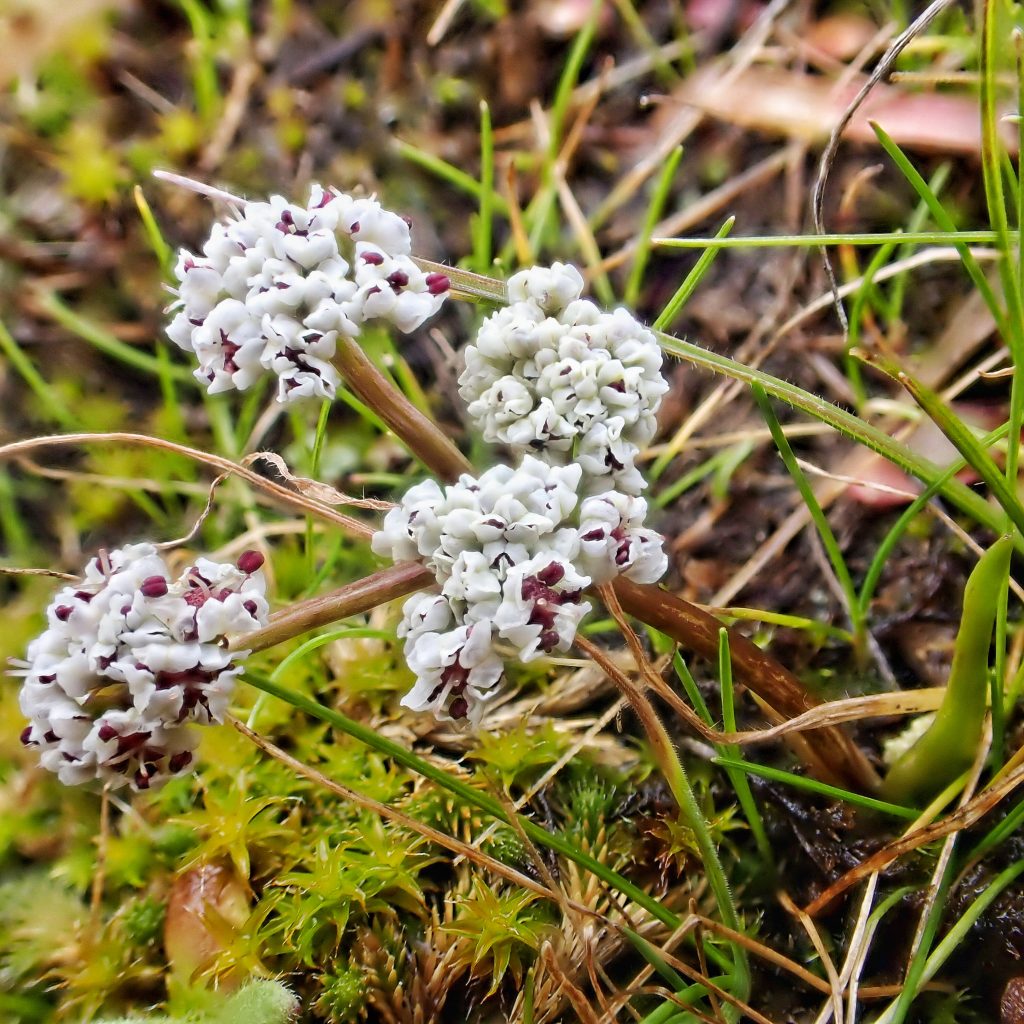
Interesting those musings of yours regarding hair splitters. Brought to mind my favorite R Crum cover where Flakey Foote is skateboarding down the sidewalk and while looking back over his shoulder to the the fat bearded one perched on the wall asks. “What does it all mean Mr Natural?”
Exactly! Are all of our words merely symbolic labels for things we do not actually understand?
Yes.
z
Did it say if the cross pollinated seeds sprouted and grew healthy plants?
Unfortunately it did not. Apparently they had a very difficult time getting even seeds from conspecifics to grow.
The anther color in your images makes me strongly suspect that your plant is neither L. gormanii or L. piperi. The common name “salt and pepper” derives from the dark anthers and white petals,
see my image of L. gormanii anthers at: https://webuyandsellstuff.com/new/?page_id=11308
(sorry, your comment form does not seem to allow for the attachment of images).
L. farinosum is a very similar species which I know has anthers of the reddish/brown color shown in your images, but the gross morphology leads me to think that you should also consider Orogenia linearifolium (= L. linearifolium), unfortunately I do not know the anther color of that species….
You may be right, Richard, but from my reading L. farinosum has yellow flowers and anthers. I didn’t even consider Orogenia linearifolia, but it appears to have much larger umbels. The color of the anthers in my pics may be distorted by my flash, and I’m colorblind so I can’t really tell the difference between red/brown/purple.
If you look on page 650 of the 2018 edition of Flora of the Pacific Northwest, for L. farinosum it says: “fls white (yellow)” meaning that yellow flowered forms are less common (I have never seen that form, but have seen many of the white flowered ones).
In my experience, the umbels of Orogenia are actually smaller than those of L. gormanii, due to being much more compact.
I see what you mean. Now that I’m aware of all of these possibilities I’ll be sure to take Hitchcock (and Flora of Oregon, since it segregates Orogenia from Lomatium) on my next trip to Catherine Creek. My biggest mistake was in thinking I already knew what the little white flowered/dark anthered plants I hoped to find were called🤦🏻♂️
FYI, L. gormanii is my favorite plant. I can often find it in flower in Pullman prior to Dec 21. Thus, the first wildflower of spring is flowering prior to the first day of winter!!!
Wow! That is very cool! I’ll certainly be looking to differentiate all 4 of these species.
The branching in two of the photos is suspect. I have never seen that. Our L. gormanii, here … Spokane … have the black looking purple anthers, simple scape.
z
Lomatium species… particularly Lomatium dissectum, are similar in function (medicinally-speaking)… One of the strongest anti-viral herbs on this continent. However, those using it, will sometimes experience a skin outbreak… like a rash… (usually, because the person has a toxic dietary intake, …. because they take too much of the fresh root extract (or glycerite)… OR… they do not have a good water-drinking habit, and so the dead viral particles… are pushed out through the skin, instead of exiting via the urine.
One thing I have never understood about botanists… (especially in the educational realms)… is… |WHY go to all the trouble of identifying an herb… (like this difficult I.D.)… and yet not just go one step further (since there is usually an audience, which might benefit from the added information about how each plant (when applicable)… is used in herbal medcine. (unless you just do not believe in the power of plants to truly heal us… just as pharmaceuticals usually do not actually HEAL, but do wonders to “cover up / mask”… symptoms. Just as an aside, Humanity has used herbs for THOUSANDS of years, around the globe. If they did not work, humanity would’ve abandoned them LONG ago… however, they do work…. and they DO actually heal/cure, with the various chemistry they’ve contained for eons… Time for humanity to wake up, and throw off the tyranny of the pharma industry… and the FDA. (I’ve been a clinical herbalist for 32 years… Created the draft language for passing legislation in our state (New Mexico)… by which all alternative practitioners are recognized as traditional practitioners, and we remain unlicensed (mainly because the practicing herbalist who exist in the world today, ARE the authorities… and carry this information… in an oral tradition, passed from generation to generation. So now, when I go to a Native Plant Society meeting…. I ALWAYS bring up the medicinal uses of each plant, within the discussion. No, I am not a botanist. A great book by Tom Elpel… (Botany in a day)…. brings us in touch with the fact that most plants within a family, have such similar chemistry, that we can usually substitute one species for another. (we do not with to over-harvest any single species… and can use the most local species which grows in our region, if it exists there). I believe that shifting to this perspective (including the medicinal aspects … and ETHICAL HARVESTING procedures, which are specific to each plant… Pick no more than 1/4 of a stand (after you inspect an area, to be certain it has not already been harvested by another person). Plants also have the DISTINCT advantage… in that you can GROW your own medicine, and feel the large satisfaction of being independent of the current, broken medical system. Most medical healing systems of the world, use plants and specific dietary intake protocols, for different conditions/illnesses. Even Western (Allopathic) medicine, used ONLY plants, when the first drug (aspirin), was patented… in 1897-1899. The source material used was Spirea Ulmaria (Meadowsweet). 🙂
https://pharmaceutical-journal.com/article/infographics/a-history-of-aspirin
Well, thanks Richard.
Voles! Voles love eating the roots of Lomatium and other Apiaceae genera. At least down here in the Willamette Valley.
Thank you! I’ll add that to the list. It often surprises me how difficult it is to find information on what eats a given organism.
L. gormanii blooms in January in open winters in Spokane. I’ve observed them January 10. I’ve heard reports of January first.
z